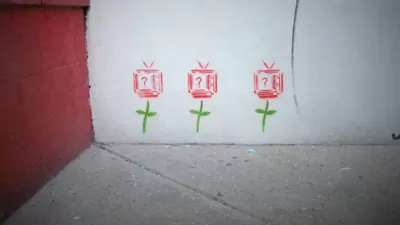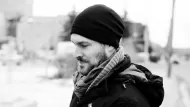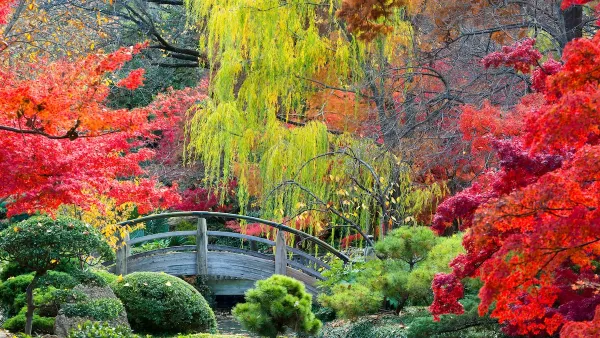I wrote an urbanist Christmas wish list last week for Fast Forward Weekly. I figured I'd elaborate on one of my wishes for weedy nature and public art: disturbance oriented art.

I cobbled together a 2014 Christmas wish list for the Fast Forward Weekly newspaper last week. I listed many wishes: an active citizenry, affordable housing, a conservation ethic. I thought here I’d elaborate on one of my more cerebral wishes: art. In a column titled "A holiday wish list: forget toys, asks for urbanism" I wrote:
Allow for more art. More public art, more street art, more building art, more pop-up-wherever art, more colour, more creative expression manifested on the grey stuff, the concrete stuff and over billboards (a nod to artist Banksy and activist Edward Abbey here). Not commissioned per se, just artistic expression in general. Bring on the artists; “tagging” is not art.
I figured I’d use a recent trip to Mexico City and its exurbs to elaborate on that wish. Below I provided a visual record of public art, or at least my kind of public art—nature and art. Nature is the assemblage of the physical world that is not human or human creation. Art is the expression of human creation in nature. It’s a good coupling.
Botanist Peter Del Tredici (2014) is considered a pioneer for his work on “spontaneous vegetation found in cities.” He chronicles the rarely appreciated plant species common to most cities, those we consider “weeds.” For the purist, a weed invades native species (though some native species are considered invasive and thus weedy). Del Tredici argues that the native vs. weed is counterproductive. We should look at the function of the species rather than its origin. Context is just as important as species.
Del Tredici uses “spontaneous” to describe plants that “grow without human intervention. These urban “disturbance adapted” plants can provide significant ecological function despite being native or weedy. They act as vegetative cover for soil which prevents erosion. They are wildlife habitat. They can be food. They can be beautiful.
I thought I’d try using Del Tredici’s argument here as a device to explore pubic art. My kind of public art. Art that is attached to the lived experience—art that may or may not be expressed by a human but has been aided by human creation. Art that is “disturbance adapted.” Art in architecturally left-over facades and back alleys. Art in cracks of concrete. Art that beautifies the ugly unintended consequences of building cities, the asphalt and horizontal concrete and lost spaces.
Good art removes environmental banality, or perhaps transcends it. I think there’s something both theoretical and quotidian here, the stuff of our everyday lives. I think this kind of public art is embedded in the routines of our lives, and our lives are embedded in it. Our day-to-day and the cities we build make disturbance adapted art. It is a coupling. It is something material in form and social and cultural. Finally, referencing geographer Steven Flusty (2003), I consider this kind of public art a mediator, translator, and participant in our urban formations. Disturbance adapted art could be a foundation for further critical investigation into what is urbanism, what is urbanisation.
With that, welcome to my point of entry into disturbance adapted art. I look forward to seeing where this may lead you. Connect with me on Twitter or Facebook and send me your kind of art.


Cuernavaca.



Connect Steven on Twitter @stevenpsnell or Facebook stevenpsnell.
Sources:
Del Tredici, P. (2014). The Flora of the Future. Projective Ecologies. Reed, C and Lister, Neds. Harvard.
Flusty, S. (2003). De-coca-colonization: making the globe from the inside out. Routledge.

Planetizen Federal Action Tracker
A weekly monitor of how Trump’s orders and actions are impacting planners and planning in America.

Restaurant Patios Were a Pandemic Win — Why Were They so Hard to Keep?
Social distancing requirements and changes in travel patterns prompted cities to pilot new uses for street and sidewalk space. Then it got complicated.

Map: Where Senate Republicans Want to Sell Your Public Lands
For public land advocates, the Senate Republicans’ proposal to sell millions of acres of public land in the West is “the biggest fight of their careers.”

Maui's Vacation Rental Debate Turns Ugly
Verbal attacks, misinformation campaigns and fistfights plague a high-stakes debate to convert thousands of vacation rentals into long-term housing.

San Francisco Suspends Traffic Calming Amidst Record Deaths
Citing “a challenging fiscal landscape,” the city will cease the program on the heels of 42 traffic deaths, including 24 pedestrians.

California Homeless Arrests, Citations Spike After Ruling
An investigation reveals that anti-homeless actions increased up to 500% after Grants Pass v. Johnson — even in cities claiming no policy change.
Urban Design for Planners 1: Software Tools
This six-course series explores essential urban design concepts using open source software and equips planners with the tools they need to participate fully in the urban design process.
Planning for Universal Design
Learn the tools for implementing Universal Design in planning regulations.
Heyer Gruel & Associates PA
JM Goldson LLC
Custer County Colorado
City of Camden Redevelopment Agency
City of Astoria
Transportation Research & Education Center (TREC) at Portland State University
Camden Redevelopment Agency
City of Claremont
Municipality of Princeton (NJ)































